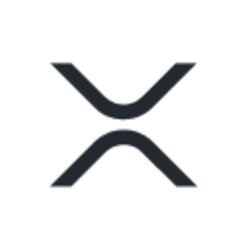-
Ripple CEO Brad Garlinghouse recently revealed that the company holds over $100 billion in XRP tokens, shaping the discourse around its valuation.
-
Amid a backdrop of significant market interest, Garlinghouse asserts that Ripple’s perceived valuation of $11 billion is “very outdated,” indicating a shift in market dynamics.
-
In a recent interview, Garlinghouse pointedly remarked, “The total value of the XRP we own now exceeds $100 billion,” emphasizing its importance in evaluating Ripple’s standing.
Ripple CEO reveals $100 billion worth of XRP tokens, challenging outdated company valuations and underscoring ongoing market demand for their products.
Ripple’s Asset Valuation Redefinition
In a candid discussion, Brad Garlinghouse highlighted the substantial ownership Ripple has in XRP, specifically noting that it now exceeds $100 billion. This figure is pivotal, as it not only speaks to the company’s asset base but also shifts the lens through which investors and analysts evaluate Ripple’s market cap. As trading in private markets presently occurs at a valuation that reflects a significant discount to net asset value, Garlinghouse’s insights compel stakeholders to reassess their valuation models.
Market Dynamics and Ripple’s Position
According to Garlinghouse, Ripple has seen a notable decline in its shares, particularly following early reports suggesting a valuation around $11 billion. He stated, “I think it’s safe to assume that the $11 billion is very outdated at this point,” reinforcing the notion that the markets are not accurately portraying the company’s worth. This discrepancy between actual asset value and market perception raises crucial questions about how Ripple’s performance in custody solutions and innovative products impacts its overall valuation.
Considerations Surrounding IPO Speculations
For years, there has been rampant speculation regarding Ripple’s potential initial public offering (IPO). However, Garlinghouse has explicitly mentioned that an IPO was not a priority, particularly during the former SEC administration, which posed numerous regulatory challenges. He noted, “Ripple has been in a position where we have not prioritized going public,” pointing to the tactical decisions made in light of regulatory uncertainties that have historically overshadowed the cryptocurrency market.
Adapting to Changing Regulatory Landscapes
With the impending departure of SEC Chair Gary Gensler, Garlinghouse forecasts a shift toward a more favorable regulatory environment for Ripple. He expressed confidence that Ripple’s products will continue to attract financial institutions seeking blockchain solutions. The demand for Ripple custody solutions is reportedly gaining traction, reflecting the industry’s gradual evolution towards more favorable regulations. Furthermore, recent job listings from Ripple predominantly in the U.S. signal a reinvestment in the domestic market, contrasting sharply with patterns from just a year prior.
The Future Outlook for Ripple
As predictions circulate regarding the future of cryptocurrency, Garlinghouse remains optimistic about Ripple’s role in facilitating financial transactions through blockchain technology. He affirms, “I think we find ourselves in a really good place,” implying that the company’s strategic focus on enhancing its technological infrastructure will position it strongly amid rising market demands.
Conclusion
In summary, Ripple’s recent disclosures regarding its XRP holdings significantly challenge existing valuation perceptions and underscore the evolving landscape of the cryptocurrency market. As Garlinghouse anticipates a transformation in regulatory conditions, it is clear that Ripple aims to solidify its status as a leader in providing financial technology solutions. The convergence of these factors presents a compelling future trajectory for Ripple and the broader cryptocurrency space.
